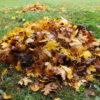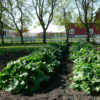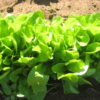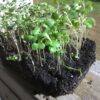Description
Black Turtle Bean (a.k.a. Black Turtle Soup, Black Bean Soup, Black Mexican, Frijoles Negras, Black Spanish, Tampico Beans, Venezuelan Beans, and Mexican Blacks)
50 Seeds per pack
Days to Maturity: 90–100 Days
Sun Requirements: Full Sun
Botanical Name: Phaseolus vulgaris
An old heirloom from Mexico and the Caribbean, Black Turtle Beans are the classic “black bean” used in Latin, Caribbean, and Southern dishes. Their well-known, smooth, jet-black seeds are small, oval, and dense—cooking to a creamy texture with a mildly sweet, earthy flavor that holds up well in soups, stews, dips, and side dishes. Popular in dishes like Cuban Moros y Cristianos, Brazilian feijoada, and Central American Gallo Pinto, these beans are a global staple known for flavor and reliability.
Bush-type plants reach 18–24″ tall and form green pods up to 6″ long, which dry to reveal the glossy black seeds. Beans may also be harvested young and eaten as snap beans, though they’re most often grown to maturity for use as dry beans. Plants are productive and hardy, thriving in warm climates with full sun and well-drained soil. Drought-tolerant and nitrogen-fixing, they help enrich the soil while producing generous yields.
While beans may attract pests such as beetles and aphids, healthy spacing, watering at the base, and good airflow help maintain strong, productive plants. Known for its reliable yields, excellent flavor, and adaptability in home gardens, Black Turtle is a must-have for any garden!
Planting Instructions for Black Turtle Bean Seeds
When to Plant
Sow Black Turtle bean seeds outdoors once the danger of frost has passed and the soil has warmed to at least 60°F, ideally 70–80°F for best germination. This is typically 1–2 weeks after your average last frost date. Beans are frost-sensitive and should never be planted in cold, wet soil.
Where to Plant
Choose a site with full sun and well-drained soil. Avoid low or compacted areas where water tends to collect. A soil pH between 6.0 and 6.8 is ideal. Black Turtle Beans thrive in warm climates and tolerate drought well once established. If your soil is poor, amend with compost before planting.
How to Plant
Do not soak bean seeds before planting, as this can reduce germination rates. Sow seeds directly outdoors about 1″ deep in well-warmed soil. Space seeds 2–4″ apart in rows that are 18–24″ apart. If starting seeds indoors, plant them 1–1.5″ deep in pots and harden them off before transplanting. Use your finger or a dibber to make the holes, and cover the seeds lightly with soil.
Growing Notes
Black Turtle Beans are hardy and productive. Plants reach 18–24″ tall and form green pods up to 6″ long that dry down to reveal glossy black seeds. Beans may also be harvested young and used as snap beans, but they are most commonly grown for dry use. Like other beans, they fix their own nitrogen and rarely need additional fertilizer. Keep soil moist but not soggy, especially during flowering and pod development. Mulch when plants are established to suppress weeds, retain moisture, and prevent soil splash.
Succession Planting
Black Turtle Beans are a bush variety that typically produces one large crop all at once. Staggered planting is generally not necessary if your goal is to grow them for dry use, since all pods are harvested at once when mature. However, if harvesting some pods early for use as snap beans, multiple sowings every 2–3 weeks may help extend the fresh bean harvest.
Pests and Problems
Watch for Mexican bean beetles, stink bugs, leafminers, spider mites, and common fungal and bacterial diseases. Remove affected leaves promptly and practice 3-year crop rotation. Avoid handling wet foliage to reduce disease spread.
Harvesting
Black Turtle Beans are ready when pods are tan and brittle and beans inside rattle.
- Option 1: Uproot the entire plant once 90% of the leaves have dropped. Hang to dry in a sheltered, well-ventilated area.
- Option 2: If conditions are humid, pick pods as they dry and finish drying them indoors.
Shell beans by hand, stomping dried pods in a sack, or dancing on them in a tub. Winnow with wind or a fan to separate beans from chaff. Beans must be hard and fully dry before storing.
Storage
Store fully dried Black Turtle beans in airtight glass jars or sealed containers in a cool, dark place. For long-term storage (5–10 years), use mylar bags or #10 cans with oxygen absorbers. Beans should not be soft or dentable with a fingernail.
If harvested as snap beans, store unwashed pods in the refrigerator crisper drawer inside a plastic bag or container. They will keep fresh for 7–10 days. For longer storage, blanch and freeze them in freezer-safe containers or bags; properly stored, they’ll last up to one year. Snap beans may also be pressure canned—never water bath can them, as it is not safe. Always follow USDA-tested pressure canning procedures.
Cooking Tips
Black Turtle Beans are known for their creamy texture and mild, earthy flavor. They benefit from overnight soaking followed by a 10-minute boil and a slow simmer until tender. Each batch may vary slightly in cooking time. Cooked beans freeze well with some cooking liquid in jars or containers.
Seed Saving
Save the best, fully mature Black Turtle beans for next year’s planting. Choose pods that are dry, brittle, and tan in color. Shell the beans and check that they are hard and cannot be dented with a fingernail. Spread the seeds out on a screen or tray in a warm, dry, and well-ventilated space for an additional week or two to ensure they are completely dry. Once fully dry, store them in airtight containers such as seed saving envelopes or glass jars in a cool, dry, and dark place. Properly dried and stored seeds can remain viable for 3–5 years.
FAQ:
What are Black Turtle Beans and what do they taste like?
Black Turtle Beans are a classic heirloom variety from Mexico and the Caribbean, known for their smooth, glossy, jet-black seeds. They have a creamy texture and a mildly sweet, earthy flavor that holds up beautifully in soups, stews, dips, and side dishes.
How long do Black Turtle Beans take to mature?
These bush-type beans typically reach maturity in 90 to 100 days when grown for dry use. Pods are ready to harvest when they turn tan and brittle, and the beans inside rattle.
Can I eat Black Turtle Beans fresh like snap beans?
Yes! While most gardeners grow them to full maturity as dry beans, you can also pick them young and enjoy the tender green pods as snap beans.
How do I plant Black Turtle Bean seeds for best results?
Plant seeds outdoors after the last frost, once soil has warmed to at least 60°F (ideally 70–80°F). Sow seeds 1″ deep and 2–3″ apart in rows spaced 18–24″ apart. Choose a sunny location with well-drained soil, and avoid soaking seeds before planting, as it may reduce germination. Once seedlings emerge, thin them to 4–6″ apart to allow for healthy airflow and root development.
What are some popular dishes that use Black Turtle beans?
They are an essential ingredient in traditional dishes like Moros con Cristianos (Cuba), feijoada (Brazil), Gallo Pinto (Costa Rica and Nicaragua), and Pabellón Criollo (Venezuela).
Do Black Turtle Beans grow on vines or bushes?
They are a bush-type variety, growing about 18–24″ tall. Plants are compact, sturdy, and do not require trellising, making them ideal for small gardens and raised beds.
Are Black Turtle Beans good for the soil?
Yes! Like other legumes, they are nitrogen-fixers, helping enrich the soil naturally. They’re also fairly drought-tolerant and perform well in warm climates with full sun.
What are common pests and how can I protect my bean plants?
Watch for Mexican bean beetles, stink bugs, and spider mites. To reduce problems, use good spacing, water at the base, and avoid handling plants when wet. Crop rotation and prompt removal of damaged leaves also help.
How do I harvest and store dry Black Turtle Beans?
Harvest when most leaves have dropped and pods are tan, dry and the seeds rattle inside. Uproot and hang whole plants or pick pods individually. Once dried, shell and winnow the beans. Store fully dried beans in airtight jars or containers in a cool, dark place.
Can I save seeds from my Black Turtle Bean plants?
Absolutely. Choose the best, fully dried pods. Once shelled, ensure beans are hard and dry before storing in a cool, dark, and dry place. Properly stored seeds remain viable for 3–5 years.


















Gail H. (verified owner) –
I just planted some in a container 3 days ago. I love the little plastic bag inside the paper envelope.
Kevin Pierson (verified owner) –
Good
Anonymous (verified owner) –
no comment
Adam Nolin (verified owner) –
Excellent harvest
Kimberly (verified owner) –
Beautiful crop